How the animal internet sheds light on the secrets of migration

Digital tracking of creatures from tiny birds to whales offers up new data on the epic trips some species make, and their role in ecology and economics
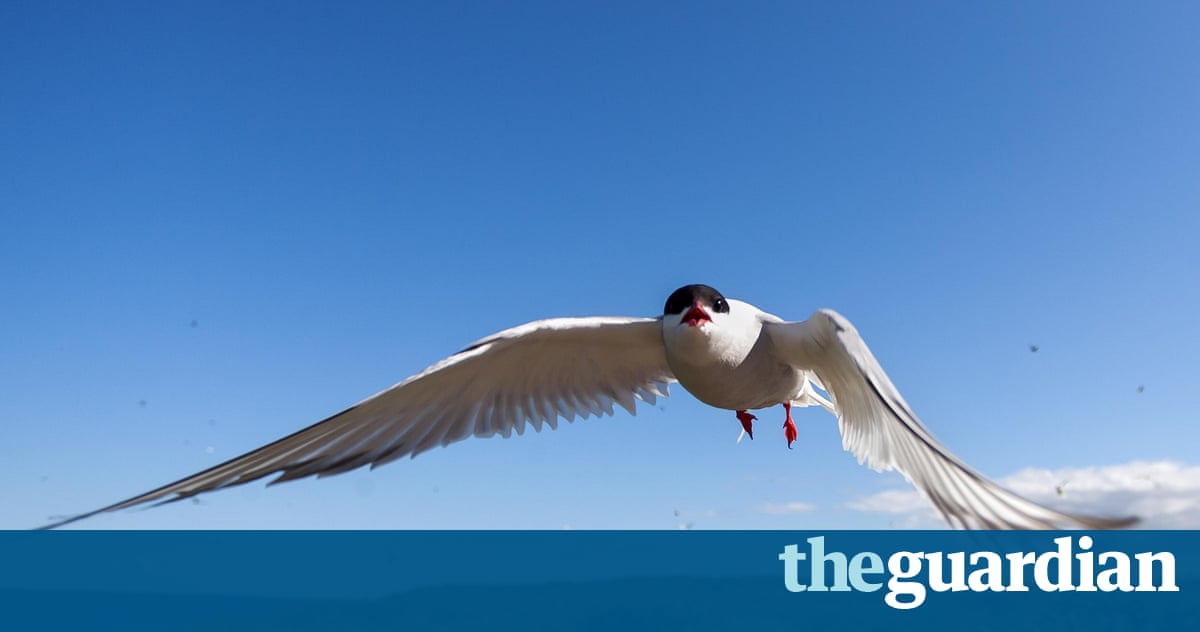
Aristotle thought the mysterious silver eel emerged from the earth fully formed. The young Sigmund Freud could not understand how it reproduced, and modern biologists puzzled for years over whether it ever returned to the Sargasso Sea, where it was known to breed.
Last year a team of Canadian scientists found conclusive proof of that extraordinary journey. They strapped tracking devices to 38 eels and followed as they migrated more than 900 miles at a depth of nearly a mile to the Sargasso, in the Atlantic near Bermuda. This year French researchers used geolocators to watch them descending European rivers and passing through the Strait of Gibraltar, heading for the same spot.
The extraordinary secrets of the thousands of species of birds, fish, mammals, insects and reptiles that make epic journeys to feeding or breeding grounds are being unlocked by a fast-emerging animal internet.
The eels migration bears comparison to that of the Arctic tern, which last week was shown by Newcastle University scientists to have made the longest-known migration, a 60,000-mile round trip between Northumberland and its winter home in the Weddell Sea, Antarctica.
Until now the details of this tiny birds massive journey were little known. Over its lifetime, said the researchers, it might fly more than 1.8 million miles almost the equivalent of four trips to the Moon and back.
We are at a time of great, new and rapid understandings about migrations, says RSPB senior scientist John Mallord. Technology is driving a revolution. With birds, it is showing us a far fuller picture of where they go and where they stop. We see now that birds may spend different lengths of time in different places. Some months are spent moving, some feeding up. In the past we had only pinpoints provided by ringing. We had no idea what happened along the route.
According to Alexander Pschera, author of a new book, Animal Internet: Nature and the Digital Revolution, new data about migratory animals will not only aid conservation but could radically transform our relationship with the natural world, showing scientists which areas need protection, and providing warnings of extreme weather.
About 50,000 creatures, from whales and leopards to bats and snails, are being fitted with tracking devices that will show precisely where and how they migrate from breeding grounds to winter homes, he says.
The animal internet will change nature, he says. More wild animals are being fitted with sensors every day and a huge store of data is coming together. We can already foresee its revolutionary effects on our awareness and knowledge of nature.
Some of the greatest advances in migration knowledge are coming from the seas. A great white shark was found to have swum more than 12,500 miles from South Africa to Australia and back in nine months. A 90kg bluefin tuna crossed the Pacific three times in 20 months, the equivalent of a 25,000-mile journey.
The information is helping marine scientists and policymakers better estimate numbers and degrees of danger. The Tagging of Pacific Pelagics (Topp) project has followed fish, turtles, birds, seals, whales and squid as they crisscross the Pacific. A spokesman said: Humans have pursued sea creatures for thousands of years, but our understanding of their lives remains fragmentary. Recent advances will soon provide near-real-time, narrative visualisations of these animals lives.
It has become clear that animals have far more complex existences than had been thought. Alpine swifts are now known to spend more than six months at a time on the wing. Grey whales may travel 14,000 miles in six months. Even house cats are found to patrol complex, overlapping territories.
Titan, a turtle dove, surprised RSPB scientists. Last year it stopped off in Spain and Morocco on its way to its usual wintering grounds in Senegal. But in 2014 it travelled via Mauritania and Mali. Mallord said: We found Titan did not have a single wintering area. The tracking showed that there was flexibility [in where he travelled], and different degrees of faithfulness.
According to Jan Boon of the Royal Netherlands Institute for Sea Research, the new data shows birds to be individuals. We can see that birds such as the red knot can act like humans. Their migrations may depend on their personalities. Some go to the Arctic; others are stick in the muds and stay at home. Both strategies are successful.
The data is helping governments understand that many migrations are beneficial economically as well as ecologically. When two million wildebeest travel in a loop from the Serengeti in Tanzania to Kenyas Masai Mara each year, their dung not only encourages new plant growth and soil renewal but attracts tens of thousands of tourists.
But, says David Wilcove, professor of ecology and evolutionary biology at Princeton University, animal migration is increasingly endangered. In virtually every corner of the globe, migratory animals face a growing array of threats, including habitat destruction, over-exploitation, disease and climate change. Saving the great migrations will be one of the biggest conservation challenges of the 21st century. But if we fail, we will pay a heavy price, aesthetically, ecologically and economically.
He points to overgrazing and desertification in Africas Sahel, which is harming populations of songbirds; the slaughter of birds passing over the Mediterranean; the loss of elk migratory routes to development in the Greater Yellowstone ecosystem; and threats to African wildlife as intensive farming spreads.
Were getting a far deeper understanding of the threats animals face, says Mallord. Being migratory adds an extra cost, however impressive the journey.
FANTASTIC JOURNEYS
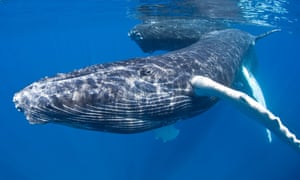
HUMPBACK WHALE: MIGRATES UP TO 6,000 MILES IN A YEAR
The worlds estimated population of 30,000 humpback whales migrate further than any other mammal often travelling half-way across the Pacific ocean every year. Summers are spent breeding and giving birth in sub-tropical waters, and they spend their winters in sub-Arctic polar regions where they feed on krill and plankton. The longest recorded migration was a female humpback that was recently discovered travelling from Brazil to Madagascar, a voyage of at least 6,000 miles.
Others humpbacks have been recorded migrating equally enormous distances, such as from Costa Rica to Antarctica. Humpback whales can swim at 5mph but, on long migration journeys, they may average only 1 mph, resting and socialising along the way.
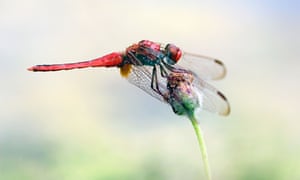
DRAGONFLY: TRAVELS MORE THAN 11,000 MILES IN A YEAR
Dragonflies migrate across every continent and ocean except Antarctica, but their routes cannot be plotted accurately because transmitters are still not small enough to be attached to them. But it is known that some species just 4cm long may migrate 8,700 to 11,200 miles in a year. Some travel to and from India, via the Maldives, the Seychelles and Mozambique, or from Canada down to Mexico and the West Indies.
Genetic studies suggest that they could be part of one single, globe-spanning population that wings its way over continents. Dragonflies are able to do so thanks to the large surface area of their wings, which allows them to them ride the prevailing winds, often at altitudes of more than 3,000 feet, while eating aerial plankton and small insects along the way.
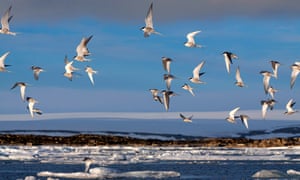
ARCTIC TERN: FLIES ABOUT 1.8 MILLION MILES IN ITS LIFETIME
An Arctic tern was this year tracked by researchers from Newcastle migrating from Northumberland in the UK to the Weddell sea in Antarctica, a round trip of 59,650 miles.
During its lifetime, the typical Arctic tern flies about 1.8 million miles the same distance as four trips from the Earth to the moon and back. European birds start to arrive back from their Antarctic winter break in May. Many birds pass through central England in the spring on this return journey. Migration south commences after breeding in late July and August.
Researchers hope that further analysis of data from the trackers will allow them to get a better understanding of how the Arctic terns organise their migration and how global climate change may affect their routes.
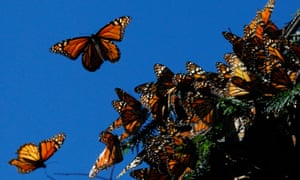
MONARCH BUTTERFLY: MIGRATES 1,500 MILES IN A YEAR
Millions of monarch butterflies will arrive in Canada and the eastern United States in the next few weeks where they will breed for a few months before migrating 1,500 miles south to spend the winter in he volcanic forests of central Mexico. No individual butterfly will complete the entire round trip; female monarchs lay eggs for the next generation during the northward migration.
Unlike birds, the young monarchs receive no navigation instruction for the migration from their parent. Instead they are thought to rely on winds, the moon and stars and to use coastal lines, mountains and roads to orient themselves.

LOGGERHEAD TURTLE: MIGRATES UP TO 12,000 MILES IN A YEAR
Loggerhead turtles have been recorded travelling across the Pacific, between Indonesia and the US, a distance of about 12,000 miles. As soon as they leave the nest, the tiny, defenceless hatchlings scramble to the ocean and began an epic 8,000-mile solo journey around the North Atlantic basin.
Able to travel at only about half a mile an hour, and unable to dive, the young turtles swim on the surface and cant evade most predators. Only around one in 4,000 are thought to survive.
Young loggerheads that survive their epic migration will return to the coastal waters of North America in about six to 12 years.